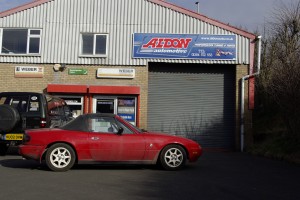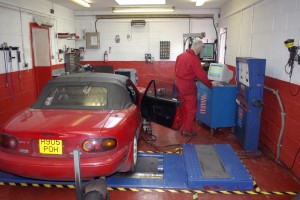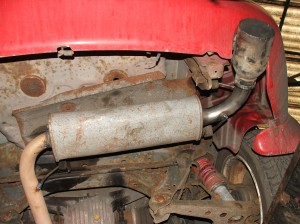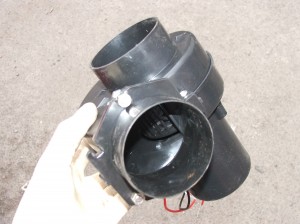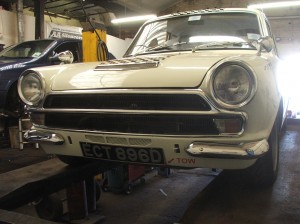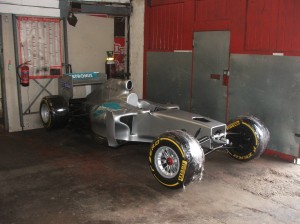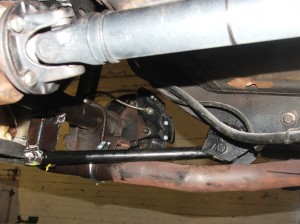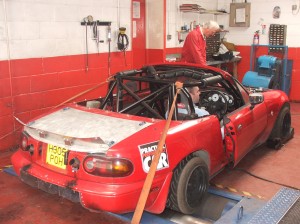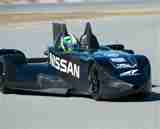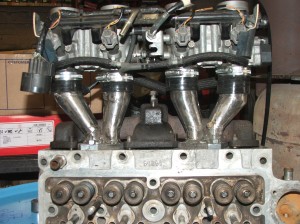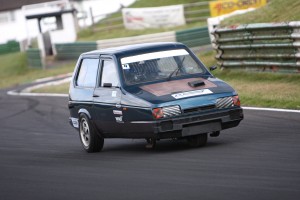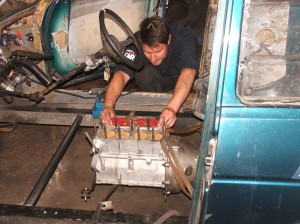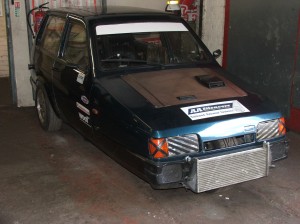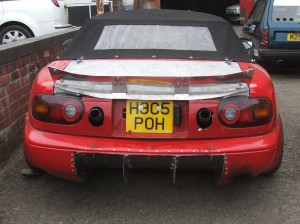The following article has been written by Applied Autosport for Practical Perfromance Car magazine
There’s a well established phrase that goes something like ‘Money makes the world go around’. In the car tuning industry bullshit proves a fairly powerful force too. Everyone always wants more for less, and there’s plenty of companies out there that’ll offer you just that. It’s easy to claim you’ll get mega bangs for your bucks, and much harder to disprove for sure that you won‘t. Seeing as so much happens on the internet these days companies on the other side of the world can claim what they like, show you a rolling road print out and take your hard earned money off you. It’s hard to know if you’re being ripped off or not.
Cyberspace is littered with dubious products that promise to make your car into a Koenigsegg Killer for the cost of a chicken biryani. Sometimes the ‘scientific’ explanations for how the product works sound more like a shampoo advert than proper technical engineering. Sometimes they seem plausible. Each car is different but there are some regular offenders that crop up on forums. We need to put them to the test and see what difference they really make.
The Mule
Our test car is a good old Mazda MX5. After 19 years of being sniggered at for being a hairdressers car it’s clocked up about 90 thousand miles. The engine is the 1.6 version and is completely standard in every respect. The car was filled with a tank of the cheapest supermarket petrol and went to Aldon Automotives rolling road (01384 572553) for a power run as our base setting. The car started life with a quoted power figure of 115bhp. Amazingly the rolling road says we still have 114bhp at the flywheel, and 110lb/ft of torque. That’s a good starting point so the car headed back to base for some modification.
The Products
Exhaust-
Hidden in among the well established ‘suck, squeeze, bang, blow’ four stroke cycle is another part of the combustion process. It tucks itself in while ‘blow’ is still blowing and when ‘suck’ starts sucking. It’s called a scavenge period. Basically the exhaust and inlet valves are open at the same time as the cams ‘overlap’. As the exhaust charge rushes out the momentum of the gas helps suck the fresh inlet gases in. Exhaust tuning is intended to optimise the scavenge period of the engine. This means getting the exhaust gases away from the engine quickly but also making the natural pulse in the exhaust gases work to help suck the inlet gases into the combustion chamber faster.
Tuning methods and designs are massively varied between cars with only turbo cars almost universally needing a simple big exhaust pipe. Having said that there is some element of truth behind the boy racers belief in a noisy exhaust. If done sensibly then a nice free flowing exhaust should normally release a few bhp. Removing the cat can also sometimes help, especially on these early 90’s cars. As time has gone by car designers have got pretty good at accounting for the effect of a cat on the engine’s gas flow. De-catting a modern car isn’t always such an advantage. Our new exhaust system is simple. Remove the cat, replace the back box with a straight through type and fit a big shiny tip to finish the look. The result sounds like it’s worth about 20bhp. Performance wise it’s the sort of thing you’d probably end up with if you bought of the internet. The internet one will probably look a bit shinier though.
Inlet-
If a free flowing exhaust helps the gases get out of the engine something will be needed to help the air get in faster. The obvious choice is a nice big cone filter. The theory is simple, get more air in by putting less of a restriction in the way. Cheapo versions are available for just a few pounds on good old eBay, although there’s no guarantee they’ll flow better than a standard filter. Most are easily adapted to screw straight onto the cars standard inlet tract in place of the airbox. That normally leaves the air filter sitting close to the engine in the toasty warm engine bay, sucking in dollops of hot air. A pretty retarded thing to do as cold air is more dense than hot air. Therefore you might actually get more air into the engine keeping the air cold than by increasing the air filter size. The added roar from the inlet sounds like it’s worth at least another 5bhp, although we might find we’ll lose 5bhp instead. To help the induction out we’ve got another ingenious device.
This product is the electric super charger. It’s a fan assembly that sits between the air filter and inlet tract. A switch turns the fan on as you open the throttle and the inlet charge is blasted with waves of ‘high pressure’ air. The electric super turbo power blasting air charger promises returns of up to 25 percent power gains. Added to our exhaust and air filter we should in theory be heading for about 180bhp by now.
Ignition-
With the inlet and exhaust sorted we need to turn our attention to the spark. The standard HT leads looked ripe for an upgrade and a stronger spark would surely help with power. Anyone who wears Burberry and spends their evenings at McDonalds will know that blue HT leads will give more torque, whereas red HT leads will give more power. Our possible power figure is already growing so we opted for blue HT leads to help raise the torque curve. The truth of the matter is that on a high performance engine, running a performance ignition set up it would be necessary to upgrade the HT leads. That would ensure the spark charge doesn’t degrade between the coil and the spark plug. High compression engines such as those with turbos give the spark a hard time. Magnecor leads are perfect for this application. They are some of the best on the market and we are in no way knocking them or their product. They work fantastically when used in the right context. On a standard engine it remains to be seen if they can make any difference.
Fuel-
That leaves us with only one area left on which to improve. Fuel. There are all sorts of fuel additives but the ones that promise more power are the ones that boost your octane rating. Petrol is complicated stuff but put simply the octane rating shows the fuel resistance to detonation. In other words it will burn in a more controlled manor rather than explode. A fuel that burns in a controlled manor allows for more timing advance to be used without causing detonation (or ‘pinking’). The more timing advance you can run the more power you’ll get. That’s handy if you’re mapping your car to an aftermarket ecu, or if you’re having your petrol car remapped as they could give it a little more ignition advance. If you’re still on good old fashioned points you can give the dizzy a twist and get more power from your octane boosting fuel additive. Very modern cars with learning ecu’s have built in knock sensors. These will control the ignition advance automatically and by boosting the octane rating the car will (over time) give you more power as well. But on a car like this, can you get more power by simply wanging a jug full of octane boost in with the fuel? It’s time to take our budget modifications back to the Aldons rolling road to see what changes we’ve made.
The Results
The first power run back at Aldons was with the free flowing exhaust and cone air filter in place. The electric super charger was fitted but switched off. The power figure came back at 116bhp, with the torque staying about the same at 110 lb/ft. So that’s an improvement of 2bhp, and the air filter was sitting right next to the exhaust. A proper cold air feed would help even more. Time to unleash the electric super turbo power blasting air charger and see if we get our 25 percent power gains.
Much to our surprise with the electric supercharger on power rose to 119bhp and the torque went up too. We had assumed this was just a piece of junk as there’s no way an electric fan can move enough air to positively charge the inlet of an engine. Amazed by the results we decided to take a power run with the supercharger removed altogether. The air filter was connected straight to the inlet tract, still sitting very close to the exhaust. The following power run revealed the mystery.
120bhp with the charger removed. It had been restricting the inlet with it switched off, and restricting it less with it switched on. That’s why we’d seen a power gain. To see the true power gains from the exhaust and air filter alone the supercharger went in the bin. That meant our inlet and exhaust modifications had netted 6bhp. The peak torque figured remained the same but the torque curve was improved slightly.
With the engine breathing properly the HT leads went on. The power run showed no difference at 120bhp. With other changes these leads would be of use but a standard coil and standard plugs being run by standard management on a standard engine only needs standard leads. Power gains- 0bhp.
Finally there’s the fuel additive. Remember the car is only on supermarket fuel which is classified as 95RON (research octane number). We added some of Aldons octane booster fuel additive. The amount added should easily turn our supermarket fuel into an match for Shell V power’s 99 RON. The newly boosted fuel was run through the system for a short while then another power run confirmed the difference made by the fuel alone on a car of this type. Bugger all. The power figure still sat staunchly at 120bhp although the torque had edged up a little to 112 lb/ft and came in a little earlier in the rev range.
As we mentioned before, increasing the fuels octane rating is only any use if you can increase either the boost pressure in a turbo car or advance the timing in a normally aspirated car. As luck would have it the timing can be manually advanced on these little MX5s. Roger the rolling road man at Aldons broke out the spanners and started tweaking. With an extra 4 degrees of timing advance the power figures finally started to climb again to 121bhp, and a gain in torque to 114 lb/ft. With the octane booster working to keep the engine safe the timing was advanced further to 6 degrees. Now the power hiked to 123bhp and 122lb/ft of torque. That’s a total gain of 9bhp and 12 lb/ft of torque.
The Conclusion
Having only spent a few quid on some pretty basic tuning the power gains aren’t bad. Certainly more than I would have expected. However, as the great philosopher and engineer ‘Scotty’ from Star Trek once said, ‘you canne change the laws of physics, Jim’. If you’re surfing on line for a part for your car and the power claims sound too good to be true, they probably are. Just nailing a part on your car rarely works without setting it up properly. An air filter will need cold air feeds, fuel additives will need timing adjustments. And electric super chargers will need throwing in the bin.

